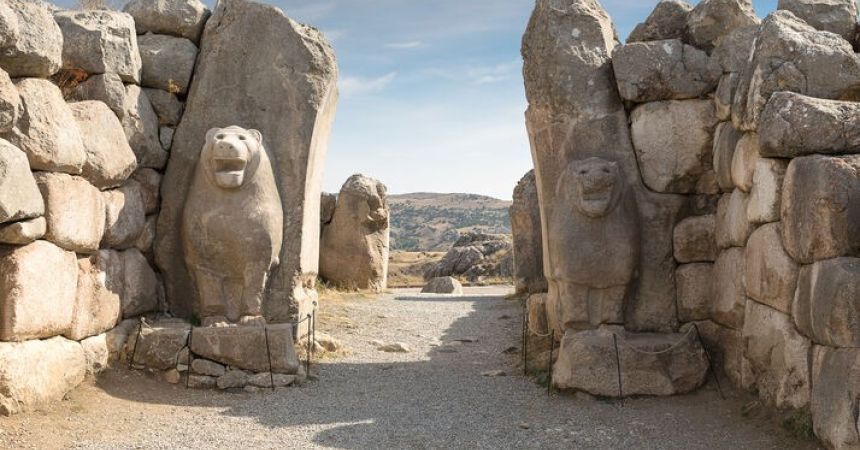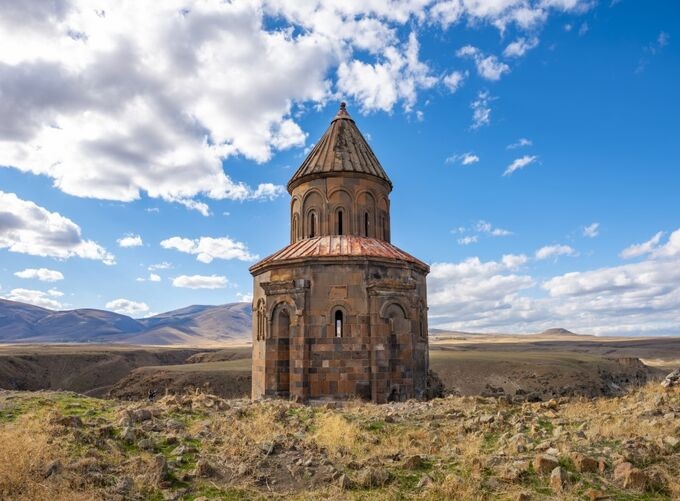
Hattusa: Turkey’s UNESCO World Heritage Treasure
Nestled in the heart of modern-day Turkey lies Hattusa, the ancient capital of the Hittite Empire. This remarkable archaeological site offers a fascinating glimpse into one of the most powerful civilizations of the ancient world. From its massive city walls and majestic gates to its sacred temples and royal palaces, Hattusa is a treasure trove of history and culture. In this comprehensive guide, we'll explore the significance of Hattusa, its key sites, and what makes it a must-visit destination for history enthusiasts and curious travelers alike.
Historical Background of Hattusa, Turkey
The Rise of the Hittite Empire
The Hittite Empire emerged around the 18th century BCE in the region known as Anatolia, which is now part of modern Turkey. The Hittites were known for their advanced society, powerful military, and significant contributions to art, literature, and law.
Establishment of Hattusa in Turkey
Hattusa became the capital of the Hittite Empire during the reign of King Hattusili I around 1650 BCE. The city was strategically located in a fertile valley, providing natural defenses and resources essential for sustaining a large population.
The Fall of Hattusa of Turkey
The city remained the political and cultural heart of the Hittite Empire until its mysterious decline around 1200 BCE. Various theories suggest invasions, internal conflicts, or environmental factors as potential reasons for its downfall.
Architectural and Engineering Marvels
Hattusa is renowned for its impressive city walls, grand gates, and monumental structures, showcasing the architectural and engineering prowess of the Hittites. The city's design reflects a sophisticated understanding of urban planning and fortification.
Cultural and Religious Center in Hattusa
As the capital, Hattusa was not only the political hub of the Hittite Empire but also a major center for religious and cultural activities. The city housed numerous temples, palaces, and public buildings, each playing a crucial role in the daily lives of its inhabitants.
Archaeological Importance
The extensive ruins of Hattusa provide invaluable insights into the Hittite civilization. Excavations have uncovered a wealth of artifacts, inscriptions, and architectural remains, contributing significantly to our understanding of the ancient Near East.
Exploring Hattusa: Key Sites and Attractions
The City Walls and Gates
Overview
One of the most striking features of Hattusa is its extensive city walls, which stretched for about six kilometers and enclosed the city's core. The walls were punctuated by several monumental gates, each with its unique design and function.
Key Gates
- Lion Gate: Named after the carved lion statues that flank its entrance, the Lion Gate served as a symbol of strength and protection.
- King's Gate: Featuring a relief of a warrior figure believed to represent the king or a deity, this gate highlights the Hittites' artistic skill.
- Sphinx Gate: Guarded by sphinx statues, this gate added an element of mystique and grandeur to the city’s fortifications.
Significance of Hattusa
The city walls and gates of Hattusa demonstrate the Hittites' advanced understanding of military architecture and their emphasis on protecting their capital. These structures also reflect the artistic and symbolic aspects of Hittite culture.
The Great Temple
Overview: The Great Temple of Hattusa, dedicated to the storm god Teshub and the sun goddess Hebat, was the largest and most important religious building in the city. It served as a central place of worship and played a crucial role in Hittite religious practices.
Architecture
- Massive Courtyards: The temple complex included large courtyards used for public gatherings and religious ceremonies.
- Sanctuaries: The inner sanctuaries housed the cult statues of the deities and were accessible only to priests and royalty.
- Storerooms: Numerous storerooms within the temple complex held offerings and valuable goods used in religious rituals.
Significance Hattusa in Turkey
The Great Temple exemplifies the Hittites' architectural sophistication and their devotion to their pantheon of gods. The temple's layout and design reflect the central role of religion in Hittite society.

The Royal Palace
Overview: The Royal Palace of Hattusa, located on Büyükkale (the Great Fortress), was the political and administrative center of the Hittite Empire. It housed the king, his family, and the administrative apparatus of the state.
Key Features
- Residential Quarters: The palace included living quarters for the royal family and their attendants.
- Throne Room: The throne room was the heart of the palace, where the king held court and conducted state affairs.
- Archives: The palace archives contained thousands of clay tablets inscribed with cuneiform script, documenting the empire's administrative, legal, and diplomatic activities.
The Yazılıkaya Sanctuary
Overview: Yazılıkaya, an open-air sanctuary located near Hattusa, is one of the most significant religious sites associated with the Hittite capital. The sanctuary features rock-cut reliefs depicting a procession of gods and goddesses.
Key Features
- Chamber A: The main chamber, adorned with carvings of deities arranged in a procession, highlights the Hittites' religious beliefs and artistic skill.
- Chamber B: A smaller chamber containing reliefs of the king and select gods, possibly used for more private or esoteric rituals.
The Lower City and Residential Areas in Hattusa
Overview: The Lower City of Hattusa was home to the majority of the population and included residential quarters, workshops, and public buildings. This area offers a glimpse into the daily lives of ordinary Hittites.
Key Features
- Residential Houses: The layout and construction of residential houses provide insights into Hittite domestic life and social structure.
- Workshops: Various workshops indicate the presence of skilled artisans and the production of goods such as pottery, textiles, and metalwork.
- Public Buildings: Public buildings, including granaries and administrative offices, highlight the organized and efficient nature of Hittite urban planning.
Visiting Hattusa: Practical Information
Getting There in Hattusa
Hattusa is located near the modern village of Boğazkale, about 150 kilometers east of Ankara. Visitors can reach the site by car, bus, or guided tour from Ankara or other nearby cities.
Best Time to Visit Hattusa
The best time to visit Hattusa is during the spring (April to June) and autumn (September to October) when the weather is mild and pleasant. The summer months can be hot, and winter can bring cold and snowy conditions.
Visitor Facilities in Hattusa
- Visitor Center: The site has a visitor center offering information, maps, and exhibits about the history and significance of Hattusa.
- Guided Tours: Hattusas Guided tours are available and provide in-depth knowledge about the site’s history and key features.
- Accommodations: Nearby Bogazkale offers various Accommodation in hattusas options, including hotels, guesthouses, and campsites.
Tips for Visitors for Hattusa
- Wear Comfortable Shoes: The site is extensive and requires considerable walking. Comfortable shoes are essential.
- Bring Water and Snacks: There are limited facilities within the archaeological site, so it’s advisable to bring your own water and snacks.
- Respect the Site: As with all historical sites, it’s important to respect the ruins and avoid touching or climbing on the ancient structures.
The Legacy of Hattusa Explored
Hattusa stands as a testament to the ingenuity, power, and cultural richness of the Hittite Empire. Its impressive ruins offer a captivating journey through ancient history, showcasing the architectural, religious, and social achievements of the Hittites. Visiting Hattusa provides a unique opportunity to step back in time and explore the remnants of a civilization that once dominated Anatolia and played a significant role in shaping the history of the ancient Near East. Whether you’re a history buff, an archaeology enthusiast, or simply a curious traveler, Hattusa promises an unforgettable experience that brings the ancient world to life.



